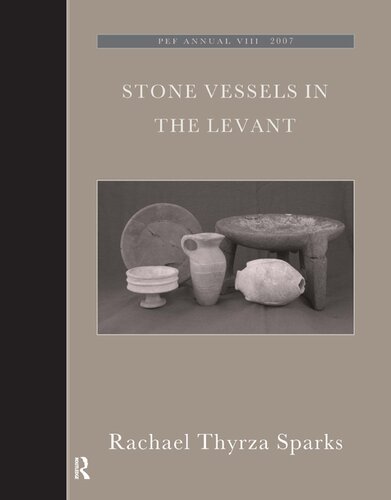

Most ebook files are in PDF format, so you can easily read them using various software such as Foxit Reader or directly on the Google Chrome browser.
Some ebook files are released by publishers in other formats such as .awz, .mobi, .epub, .fb2, etc. You may need to install specific software to read these formats on mobile/PC, such as Calibre.
Please read the tutorial at this link. https://ebooknice.com/page/post?id=faq
We offer FREE conversion to the popular formats you request; however, this may take some time. Therefore, right after payment, please email us, and we will try to provide the service as quickly as possible.
For some exceptional file formats or broken links (if any), please refrain from opening any disputes. Instead, email us first, and we will try to assist within a maximum of 6 hours.
EbookNice Team

Status:
Available4.6
17 reviewsExamining stone vessels in the Levant during the 2nd millennium BC, the author explores the links between material culture and society through a comprehensive study of production and distribution. Extensively illustrated with 100 drawings, maps and charts, this volume includes a full object catalogue.
This study represents the first comprehensive overview of the stone vessel assemblagesof the Levant in this period, a time which, fed by an increase of wealth and interregional trade, saw a growth in the popularity and variety of such vessels.
Previously, our understanding of the varied functions and forms of these diverse vessels has been relatively underdeveloped. In this volume the author attempts to address this problem by creating a typological framework though which we can analyse variability and define essential characteristics of local stone vessel workshops. Only once this has been achieved is it possible to look at stone vessel production in its wider cultural context.
Subsequent chapters explore broader themes, beginning within the workshops themselves, examining the links between craftsmen, their sources of raw materials, and the authorities that controlled and distributed their output. Considerations of the geographical and chronological distribution of such goods are then used to provide a regional perspective for the operation of these workshops, connections between them, and further insights into the nature of local and international trade. Finally, the objects themselves can be used to assess the impact of trends such as the growing Egyptianization of the ruling classes of the Levant at this time.